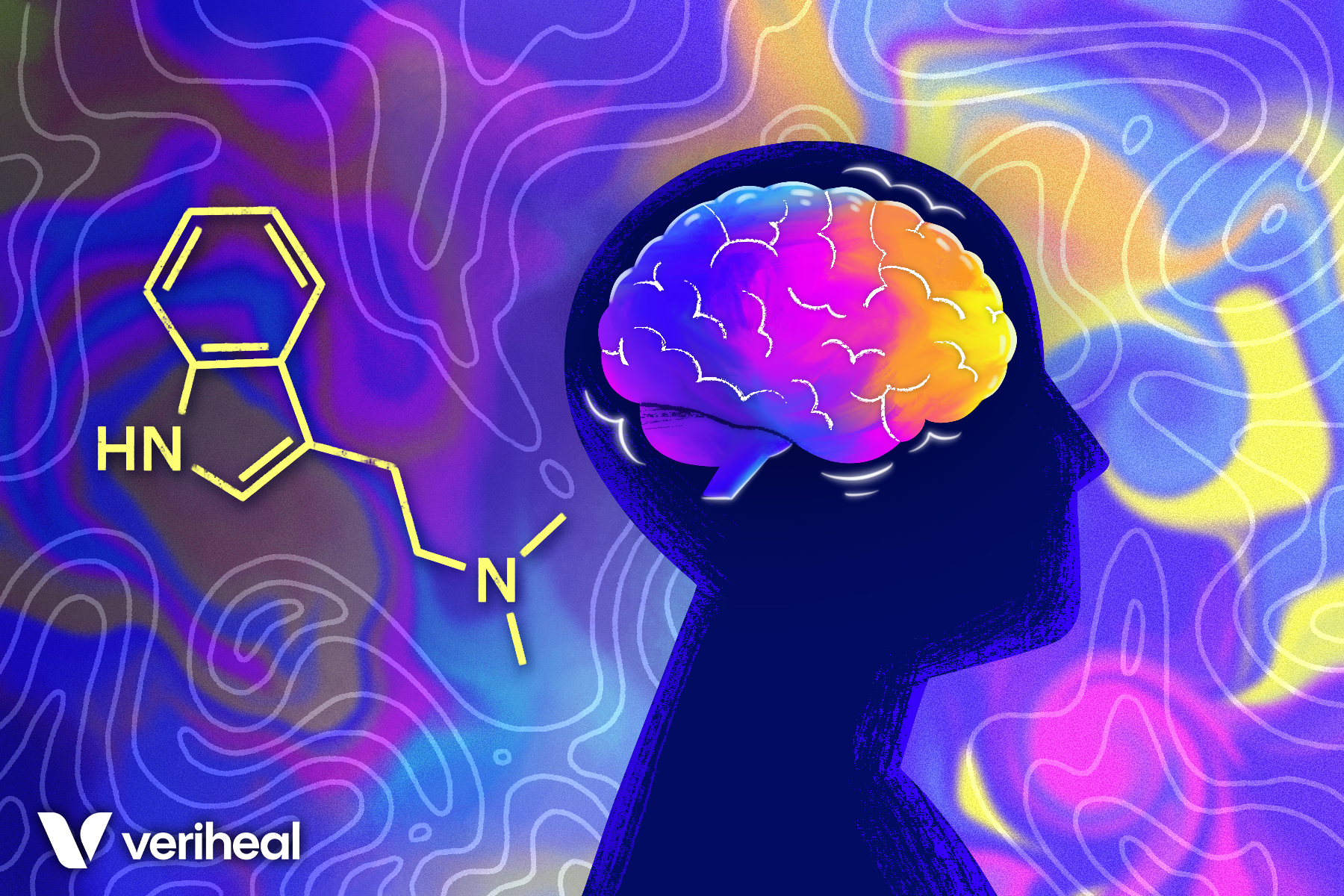In an unprecedented exploration of the human mind, researchers from Imperial College London have conducted the first-ever study that meticulously tracks brain activity at the start, during, and following the mind-bending DMT experience.
What Is DMT?
DMT, or dimethyltryptamine, is a naturally occurring psychedelic substance found in various plants, animals, and even in trace amounts within the human body. This substance is the primary active ingredient in the traditional South and Central American brew called ayahuasca, used in spiritual and healing ceremonies.
Dr. Chris Timmermann, one of the study’s authors, offers profound insights into the study findings, unveiling a remarkable new understanding of how DMT alters one’s perception of reality. In contrast to traditionally used psychedelics like LSD and psilocybin, which have long-lasting effects, DMT takes users on a whirlwind journey of intense, immersive experiences that last mere minutes. This unique characteristic of DMT sets it apart and has left researchers eager to delve deeper into the mysteries it presents.
Brain Function and the DMT Experience
A significant aspect of the brain’s function is its role in modeling or predicting the environment, which helps us navigate and make sense of the world around us. When DMT enters the equation, it disrupts high-level brain systems responsible for encoding these complex models, leading to the intense and often indescribable experiences characteristic of the drug.
The DMT effect induces profoundly altered states of consciousness, transporting users to seemingly alternate realities and dimensions. This extraordinary phenomenon has led researchers to investigate the connection between brain function and the DMT-induced altered state.
Study Methodology: Capturing Brain Activity With fMRI and EEG
To better understand DMT’s influence on the brain, researchers from Imperial College London employed cutting-edge technology, utilizing functional magnetic resonance imaging (fMRI) and electroencephalography (EEG) to capture detailed images of brain activity. Twenty healthy volunteers participated in the study, each given high doses of DMT intravenously. These two complementary imaging techniques allowed the research team to observe both the broader brain architecture and its fine-grained rhythmic activity as the volunteers navigated their DMT-induced journeys.
Throughout the roughly 20-minute psychedelic experience, participants provided subjective intensity ratings on a scale of 1 to 10 at regular intervals, allowing researchers to correlate brain activity with the intensity of the experience. By combining these advanced imaging methods and gathering real-time feedback from participants, the study offers an unparalleled glimpse into the inner workings of a DMT-affected brain.
Why You Should Get Your Medical Marijuana Card
Veriheal has satisfied millions of patients nationwide by giving them access to these benefits
- Larger purchase limits
- Peace of mind
- Enhanced legal protection
- Access to higher potency strains
- Save up to 25% on cannabis purchases
- Skip the line at the dispensary
Key Findings: Changes in Brain Activity and Connectivity
The study’s key findings revealed a marked increase in connectivity and communication across various brain regions, highlighting a profound shift in brain dynamics during the DMT experience. This altered state was characterized by network disintegration, desegregation, and a surge in global functional connectivity, reflecting the complex interplay of neural activity that underlies the intense psychedelic journey.
Interestingly, these changes in brain activity occurred most prominently in areas related to imagination and higher-order thinking. This suggests that DMT has a unique capacity to unlock and amplify the brain’s creative potential, opening up a world of vivid visions and otherworldly experiences.
Significance and Future Research
This landmark study not only expands upon previous research in psychedelic brain imaging but also underscores the immense potential of psychedelics as powerful scientific tools to probe the relationship between brain activity and conscious experience. By offering a more comprehensive view of the brain’s inner workings during the DMT experience, this research is a foundation for future investigations into the enigmatic world of heightened states of consciousness.
As psychedelic research continues to evolve, scientists are now looking to push the boundaries of our understanding further. Future exploration includes the possibility of prolonging the high point of the psychedelic experience utilizing continuous DMT infusion, which could offer even greater insights into the nature of consciousness.
Additionally, researchers are assessing the potential therapeutic applications of DMT, such as its use in treating patients with depression. This pioneering work in the realm of psychedelics holds immense promise for unlocking new dimensions of knowledge and therapeutic potential, heralding a new era in our understanding of the human mind and the mysterious power of these remarkable compounds.
The Bottom Line
In conclusion, the advanced brain imaging techniques employed in this groundbreaking study have opened new doors in our understanding of DMT and its impact on the perception of reality. By capturing detailed imagery of brain activity throughout the DMT experience, researchers have illuminated the intricate neural mechanisms that drive these powerful changes in consciousness.
This research undoubtedly establishes a strong foundation for the future of psychedelic studies, especially in the realm of mental health. As we uncover new insights, we progress towards deciphering the enigma of the human mind and tapping into the potential of psychedelics to deepen our comprehension of the complex nature of the human experience.
Note: The content on this page is for informational purposes only and is not intended to be professional medical advice. Do not attempt to self-diagnose or prescribe treatment based on the information provided. Always consult a physician before making any decision on the treatment of a medical condition.
Author, Share & Comments
















